An Experimental and Numerical Study on the Lateral Stiffness Limits of Straddle-Type Monorail Tour-Transit Systems
Abstract
:1. Introduction
2. Methodologies
2.1. Wind–Vehicle–Bridge Coupling Mode
2.1.1. Modelling Track Beams
2.1.2. Modelling Monorail Trains
2.1.3. Coupling Model
2.2. Model Validation
2.2.1. Test Site Information
2.2.2. Validation
3. Results and Analysis
3.1. Influencing Factors
3.1.1. Effects of Travelling Speed
3.1.2. Effects of Vehicle Loading
3.1.3. Effect of Pier Height
3.1.4. Effects of Beam Stiffness
3.2. Sensitivity Analysis
3.2.1. Variance-Based Methods
3.2.2. Sensitivity Analysis of the Lateral Response
3.3. Determination of Lateral Stiffness Index
3.3.1. Lateral Acceleration Perspective
3.3.2. Lateral Riding Comfort Perspective
3.3.3. Lateral (Centripetal) Wheel Force Perspective
3.3.4. Limits of the Lateral Displacement and Lateral Deflection–Span Ratio of the Pier Top
4. Discussion
Limitations and Future Work
- 1.
- The simulation model established in this paper has room for improvement. For example, a more detailed measurement of the in situ wind field can be carried out to consider the wind-induced effects better. This may help realize the coupled simulation of extreme load effects and dynamic effects of large-span track beams. In addition, more effects of track irregularity can be further included, which can be achieved by employing spectra of various levels and considering the irregularity-induced effect under complex loading conditions, such as ground motion. Of course, a more complicated model generally means a more time-consuming solving process. Moreover, more practical design preferences should be integrated to draw more meaningful conclusions and to promote potential applications.
- 2.
- This work focuses on the lateral response of an MTTS. However, supplying the vertical response of an MTTS may be useful for effectively capturing the dynamic performance of the MTTS. In addition, a more targeted evaluation system and standard limit values can be proposed. The selection of the lateral stiffness index and dynamic performance indicator mainly relies on referring to existing specifications. The possibility of using a more precise indicator for the MTTS should be further studied.
5. Conclusions
- (i)
- A wind–train–bridge coupling model validated by field measurements was developed to investigate the effects of multiple factors on the dynamic response of an MTTS. During the changes in vehicle speed and vehicle weight, the vertical response increase in the MTTS is greater than the horizontal response increase. Changes in pier height have a significant impact on the lateral response of monorail beams. Moreover, it is concluded that the variation in lateral stiffness can distinctly affect the dynamic responses.
- (ii)
- A variance-based sensitivity analysis was performed on various influencing factors. Results revealed that the pier height and the lateral stiffness significantly affected the lateral response of the overall structure. Among them, the pier height significantly contributed to the lateral displacement of the pier top, accounting for 87% of the first-order sensitivity index and 75% of the total sensitivity index. The lateral acceleration and the maximum lateral displacement at the mid-span significantly contributed to 74%, 75%, and 78% of the first-order sensitivity indexes and accounted for 44%, 84%, and 66% of the total sensitivity indexes, respectively.
- (iii)
- Based on the obtained results, the lateral responses of the MTTS were evaluated in terms of index of beam acceleration, riding comfort of the monorail train, and wheel force on the bogie. Finally, two lateral limited values, i.e., a lateral displacement limit of 8.04 mm for the pier top and a lateral deflection–span ratio limit of L/4200 were determined.
Author Contributions
Funding
Data Availability Statement
Conflicts of Interest
References
- Guo, F.; Chen, K.; Gu, F.; Wang, H.; Wen, T. Reviews on current situation and development of straddle-type monorail tour transit system in China. J. Cent. South Univ. Sci. Technol. 2021, 52, 4540–4551. [Google Scholar]
- Lee, J.; Kim, H.; Lee, K.; Kang, Y.J. Effect of load combinations on distortional behaviors of simple-span steel box girder bridges. Metals 2021, 11, 1238. [Google Scholar] [CrossRef]
- Cheng, J.; Yao, H. Simplified method for predicting the deflections of composite box girders. Eng. Struct. 2016, 128, 256–264. [Google Scholar] [CrossRef]
- Zhou, M.; Liu, Z.; Zhang, J.; An, L.; He, Z. Equivalent computational models and deflection calculation methods of box girders with corrugated steel webs. Eng. Struct. 2016, 127, 615–634. [Google Scholar] [CrossRef]
- Shamsi, M.; Ghanbari, A. Nonlinear dynamic analysis of Qom monorail bridge considering soil-pile-bridge-train interaction. Transp. Geotech. 2020, 22, 100309. [Google Scholar] [CrossRef]
- Nettis, A.; Nettis, A.; Ruggieri, S.; Uva, G. Corrosion-induced fragility of existing prestressed concrete girder bridges under traffic loads. Eng. Struct. 2024, 314, 118302. [Google Scholar] [CrossRef]
- GB 8408-2018; Large-Scale Amusement Device Safety Code. State Administration of Work Supervision: Beijing, China, 2018.
- GB/T 51234-2017; Code for Design of Urban Rail Transit Bridge. Ministry of Housing and Urban-Rural Development of the People’s Republic of China: Beijing, China, 2017.
- GB 50458-2022; Standard for Design of Straddle Monorail Transit. Ministry of Housing and Urban-Rural Development of the People’s Republic of China: Beijing, China, 2022.
- Gao, Q.; Cui, K.; Li, Z.; Li, Y. Numerical investigation of the dynamic performance and riding comfort of a straddle-type monorail subjected to moving trains. Appl. Sci. 2020, 10, 5258. [Google Scholar] [CrossRef]
- Liu, M. Study on Coupling Vibration of Windmill Bridge for T-beam Continuous Rigid Frame Bridge in High Altitude Area. Master’s Thesis, Chongqing Jiaotong University, Chongqing, China, 2019. [Google Scholar]
- Miao, Y. Studies on Coupled Vibration of Rail-cum-Road Cable-stayed Bridge with a Super Span under Wind Loads. Master’s Thesis, Central South University, Changsha, China, 2014. [Google Scholar]
- Huang, G.; Ren, N.; Zheng, H. Structural dynamics of bridges under the coupling effect of windmills and bridges. Eur. J. Comput. Mech. 2023, 31, 601–620. [Google Scholar] [CrossRef]
- Chen, J.; Li, R.; Xu, J.; Li, P. Study on the aerodynamic performances and the operational safety of the vehicle-bridge system under the crosswind. Mech. Based Des. Struct. Mach. 2024, 2, 1–23. [Google Scholar] [CrossRef]
- Wang, S.; Wan, X.; Guo, M.; Giao, H.; Zhang, N.; Ye, Q. Nonlinear dynamic analysis of the wind–train–bridge system of a long-span railway suspension truss bridge. Buildings 2023, 13, 277. [Google Scholar] [CrossRef]
- Zou, Y.; Liu, Z.; Shi, K.; He, X. Analysis of effects of aerodynamic interference on dynamic response of suspended monorail wind–vehicle–bridge system using joint simulation approach. Structures 2022, 45, 179–198. [Google Scholar] [CrossRef]
- Luo, S. The Research on the Aerodynamic Characteristics of Road Vehicles on Bridge Deck and Its Driving Safety. Master’s Thesis, Hunan University of Science and Technology, Xiangtan, China, 2023. [Google Scholar]
- Jiang, Y. Study on Coupled Vibration and Lateral Stiffness of Steel Girder Cable-Stayed Long-Span Road-Rail Bridge. Master’s Thesis, Chongqing Jiaotong University, Chongqing, China, 2023. [Google Scholar]
- Guo, X.; Zou, X. Influence of wind guide railing parameters on wind-vehicle-bridge coupling vibration of steel truss bridge. J. Railw. Sci. Eng. 2024, 21, 1068–1078. [Google Scholar]
- Sugimura, H.; Takeda, M.; Takei, M.; Yamaoka, H.; Ogata, T. Development of HEV engine start-shock prediction technique combining motor generator system control and multi-body dynamics (MBD) models. SAE Int. J. Passeng. Cars-Mech. Syst. 2013, 6, 1363–1370. [Google Scholar] [CrossRef]
- Xiang, H.; Tao, Y.; Chen, X.; Hu, H.; Li, Y. Study on Transverse Deflection-span Ratio Limit of Long-span Railway Suspension Bridge Considering Wind Barrier. J. China Railw. Soc. 2023, 45, 62–69. [Google Scholar]
- Zhou, C.; Xu, X.; Zheng, X.; Chen, X. Study on the Influence of Pier Stiffness on Vehicle-bridge Coupled Vibration of Long-span Continuous Girder Bridge of Railway. High Speed Railw. Technol. 2022, 13, 23–29. [Google Scholar]
- Zhu, Z.; Jiang, Z. Analysis of dynamic characteristics of large-span suspension bridges with extended spans of stiffening girders. J. Railw. Sci. Eng. 2022, 19, 1014–1023. [Google Scholar]
- Liu, L.; Jiang, L.; Liu, X.; Zhou, W.; Nie, L.; Shao, G. Research on analytical model of transverse deformation and rail surface deformation of high-speed railway bridge based on Ritz method. J. Cent. South Univ. Nat. Sci. Ed. 2021, 52, 4349–4360. [Google Scholar]
- Wang, M.; Song, Z.; Teng, N. Research on Transverse Stiffness of High Speed Maglev Guideway Girder Based on Coupled Vibration. Railw. Eng. 2021, 61, 1–5. [Google Scholar]
- Yan, Y.; Zhan, J.; Zhang, N.; Shen, K. Influence of Pier Transverse Displacement and Foundation Stiffness Change on High Speed Running Safety. Railw. Eng. 2020, 60, 8–12. [Google Scholar]
- Carden, L.P.; Buckle, I.G.; Itani, A.M. Transverse displacement capacity and stiffness of steel plate girder bridge superstructures for seismic loads. J. Constr. Steel Res. 2007, 63, 1546–1559. [Google Scholar] [CrossRef]
- Naeimi, M.; Tatari, M.; Esmaeilzadeh, A.; Mehrali, M. Dynamic interaction of the monorail–bridge system using a combined finite element multibody-based model. Proc. Inst. Mech. Eng. Part K J. Multi-Body Dyn. 2015, 229, 132–151. [Google Scholar] [CrossRef]
- Guo, F.; Wang, P. Measurement and analysis of the longitudinal level irregularity of the track beam in monorail tour-transit systems. Sci. Rep. 2022, 12, 19219. [Google Scholar] [CrossRef] [PubMed]
- Wang, P.; Guo, F.; Zhang, H.; Jin, J.; Liao, Q.; Yan, Y. Acquiring the High-Precision Spectrum of Track Irregularity by Integrating Inclination in Chord Methods: Mathematics, Simulation, and a Case Study. Mathematics 2024, 12, 2227–7390. [Google Scholar] [CrossRef]
- Jiang, Y.; Wu, P.; Zeng, J.; Qu, S.; Wang, X.; Wang, S. Simplified and relatively precise back-calculation method for the pavement excitation of the monorail. Int. J. Pavement Eng. 2021, 22, 480–497. [Google Scholar] [CrossRef]
- ABAQUS. ABAQUS User’s Manual, Version 2016; Dassault Systemes: Velizy-Villacoublay, France, 2016; Available online: http://62.108.178.35:2080/v2016/index.html (accessed on 20 September 2024).
- SIMPACK, Version 2021x; Dassault Systemes: Velizy-Villacoublay, France, 2021; Available online: https://blog.3ds.com/brands/simulia/simpack-r2021x-multibody-system-simulation-updates/ (accessed on 20 September 2024).
- ANSYS. ANSYS Fluent 17.0 Documentation; ANSYS Inc.: Lebanon, NH, USA, 2016. [Google Scholar]
- Bao, Y.L.; Xiang, H.Y.; Li, Y.L.; Yu, C.J.; Wang, Y.C. Study of wind–vehicle–bridge system of suspended monorail during the meeting of two trains. Adv. Struct. Eng. 2019, 22, 1988–1997. [Google Scholar] [CrossRef]
- Zou, Y.; Liu, Z.; Shi, K.; Ou, S.; He, X.; Deng, H.; Zhou, S. Experimental study of aerodynamic interference effects for a suspended monorail vehicle–bridge system using a wireless acquisition system. Sensors 2021, 21, 5841. [Google Scholar] [CrossRef]
- Saltelli, A.; Tarantola, S.; Chan, K. A quantitative model-independent method for global sensitivity analysis of model output. Technometrics 1999, 41, 39–56. [Google Scholar] [CrossRef]
- Qin, S.; Han, S.; Li, S. In-situ testing and finite element model updating of a long-span cable-stayed bridge with ballastless track. Structures 2022, 45, 1412–1423. [Google Scholar] [CrossRef]
- Moore, J.C.; Glenncross-Grant, R.; Mahini, S.S.; Patterson, R. Regional timber bridge girder reliability: Structural health monitoring and reliability strategies. Adv. Struct. Eng. 2012, 15, 793–806. [Google Scholar] [CrossRef]
- Tubaldi, E.; Tassotti, L.; Dall’Asta, A.; Dezi, L. Seismic response analysis of slender bridge piers. Earthq. Eng. Struct. Dyn. 2014, 43, 1503–1519. [Google Scholar] [CrossRef]
- GB/T 5599-2019; Specification for Dynamic Performance Assessment and Testing Verification of Rolling Stock. State Administration for Market Regulation; Standardization Administration of PRC: Beijing, China, 2020.
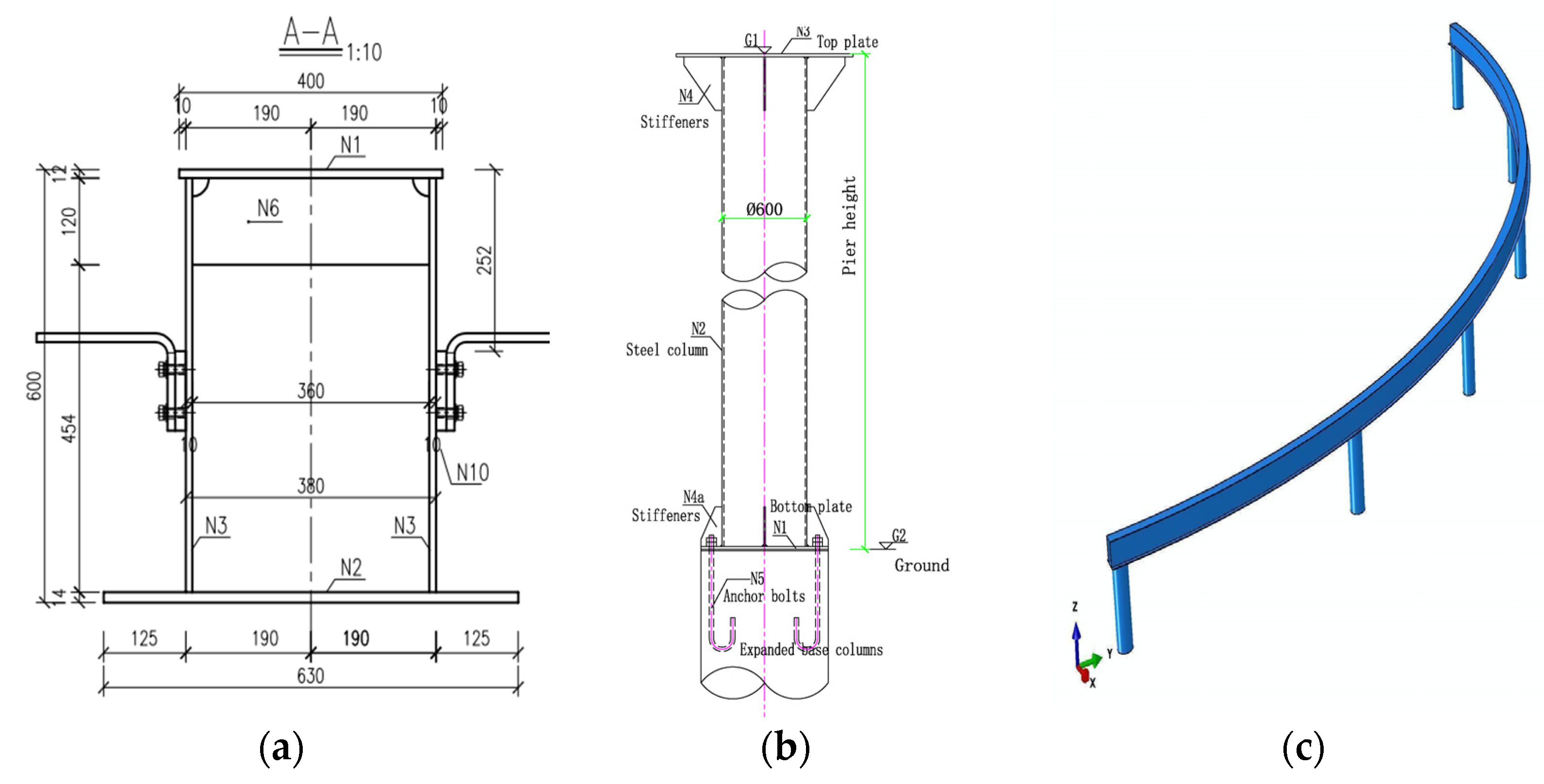
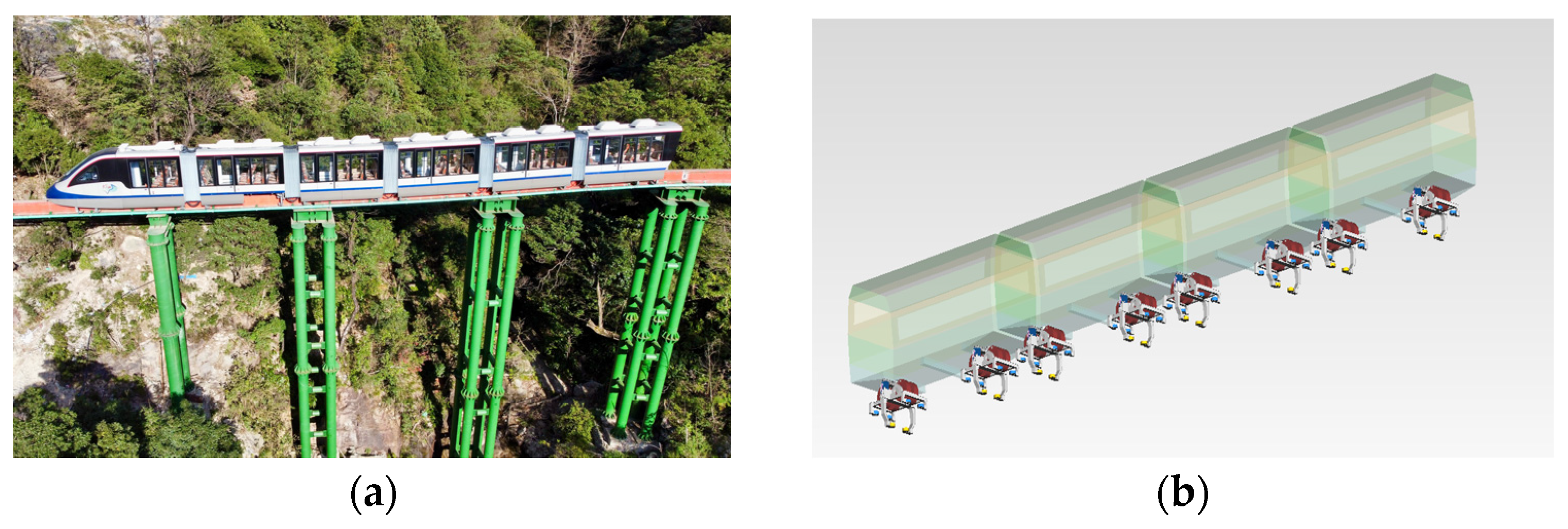
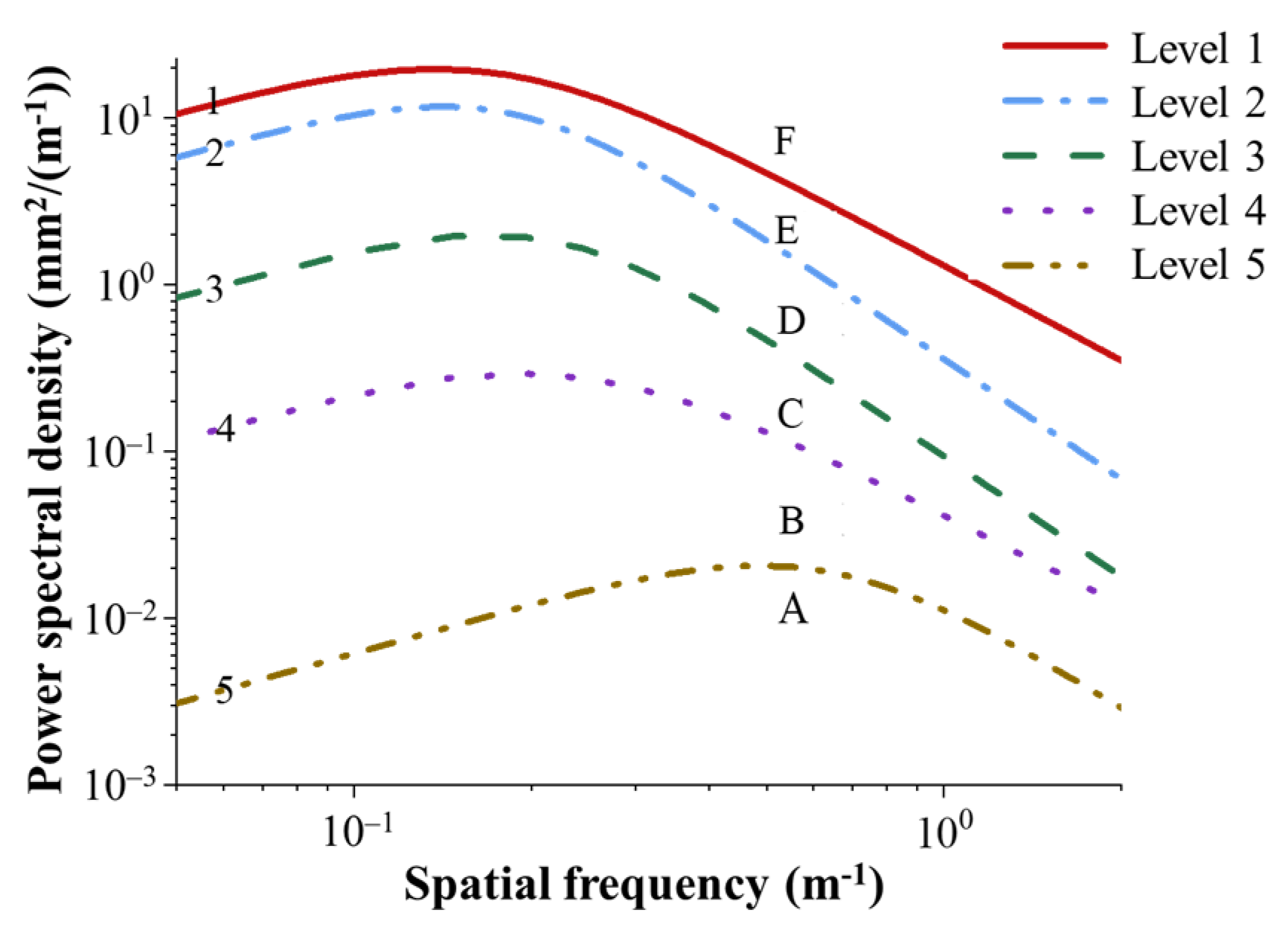

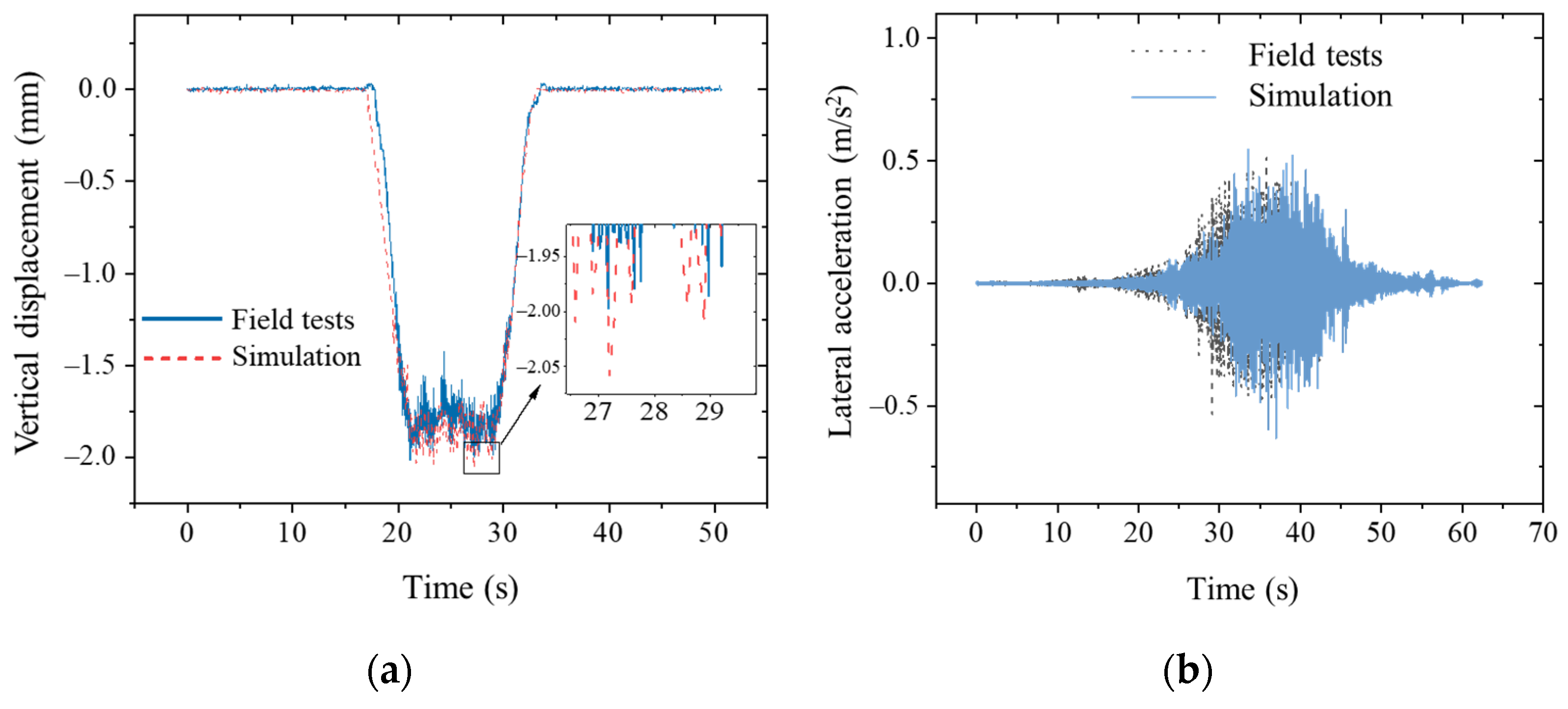
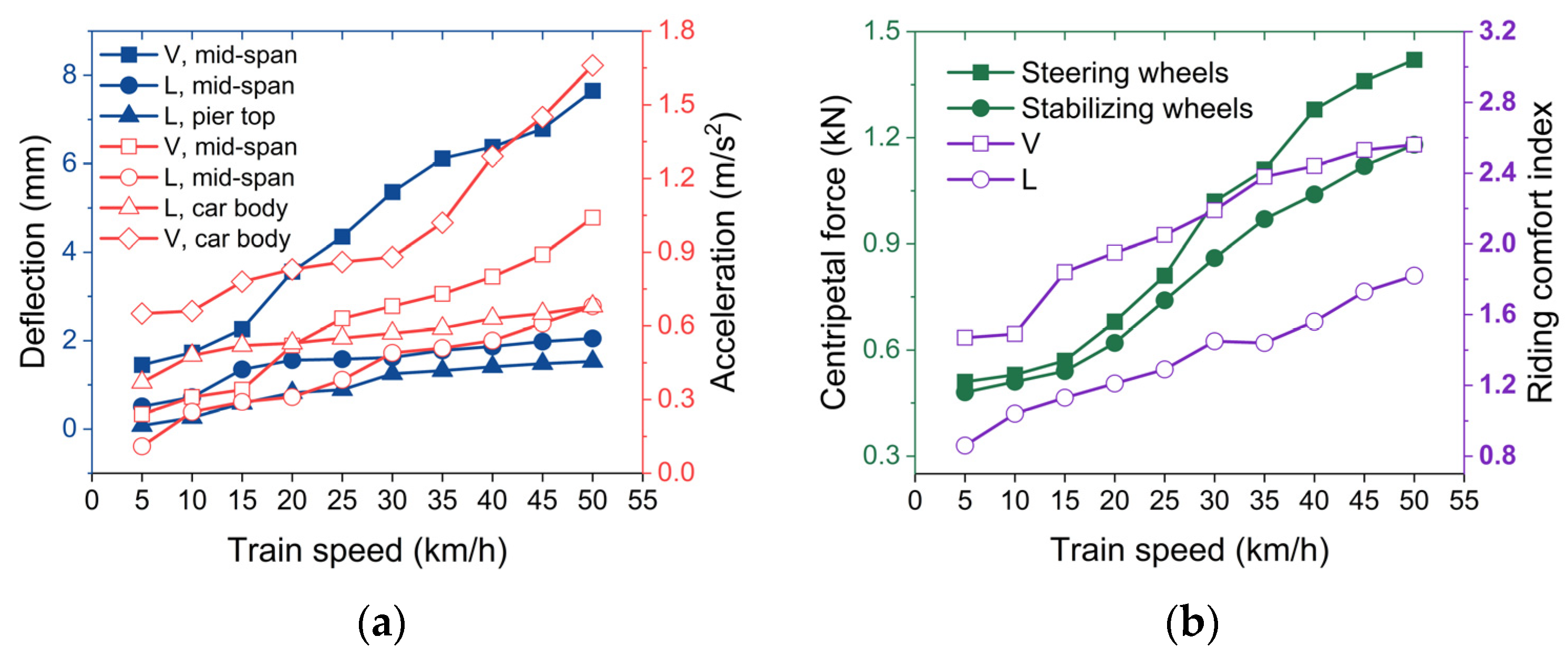

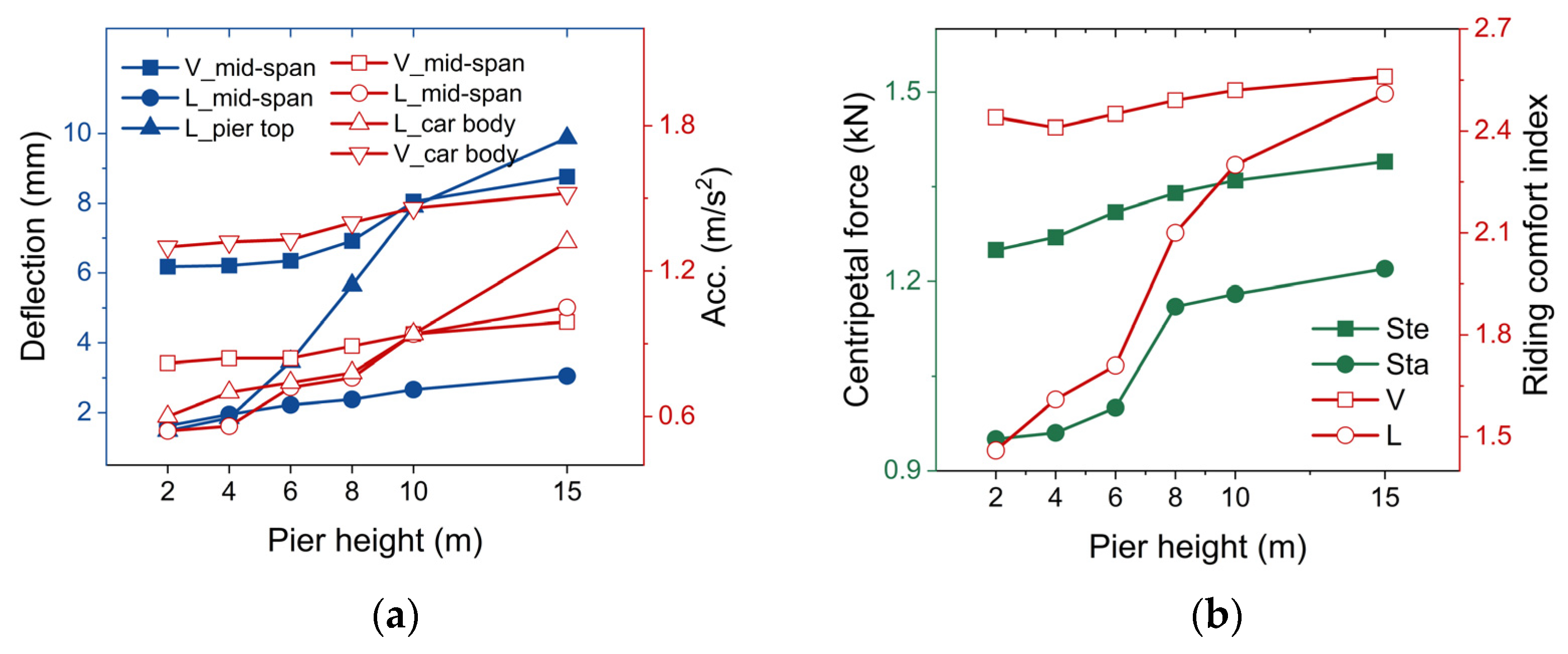
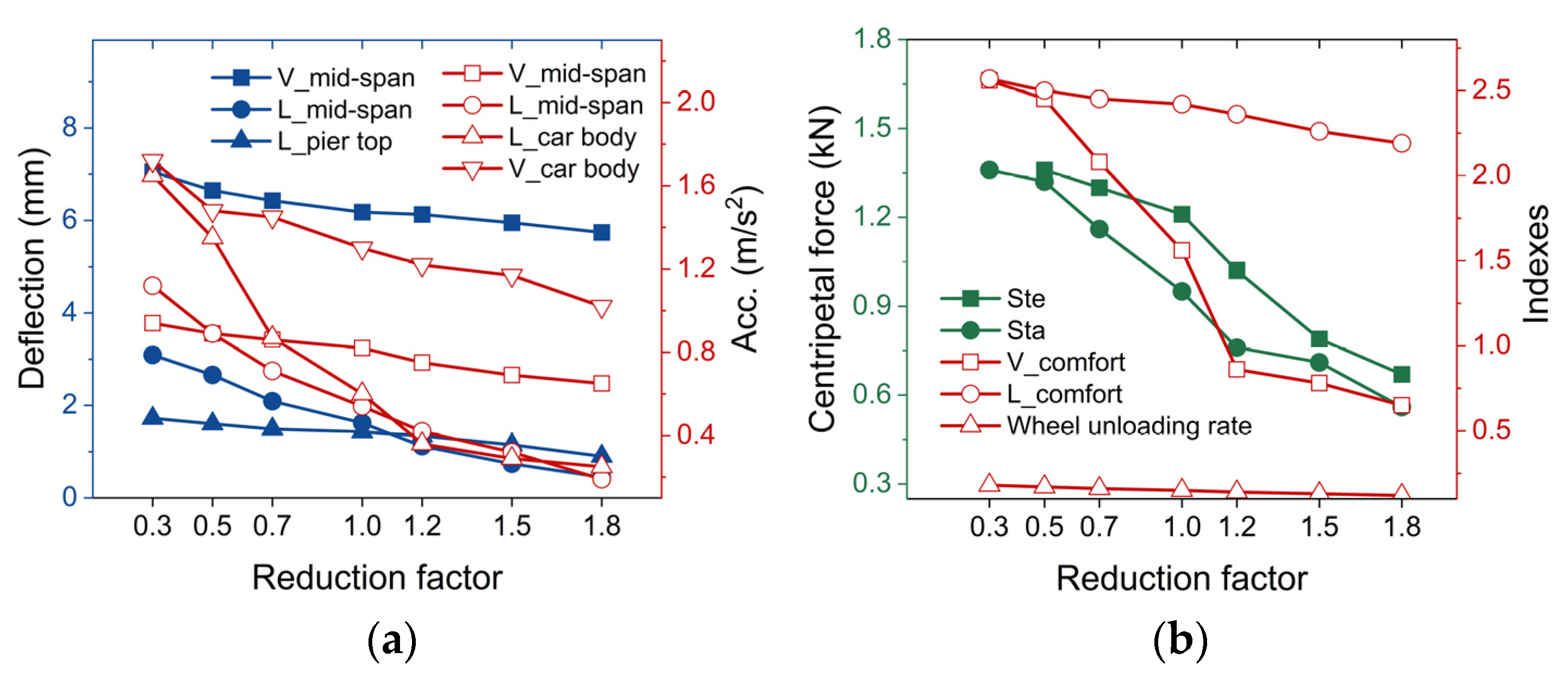
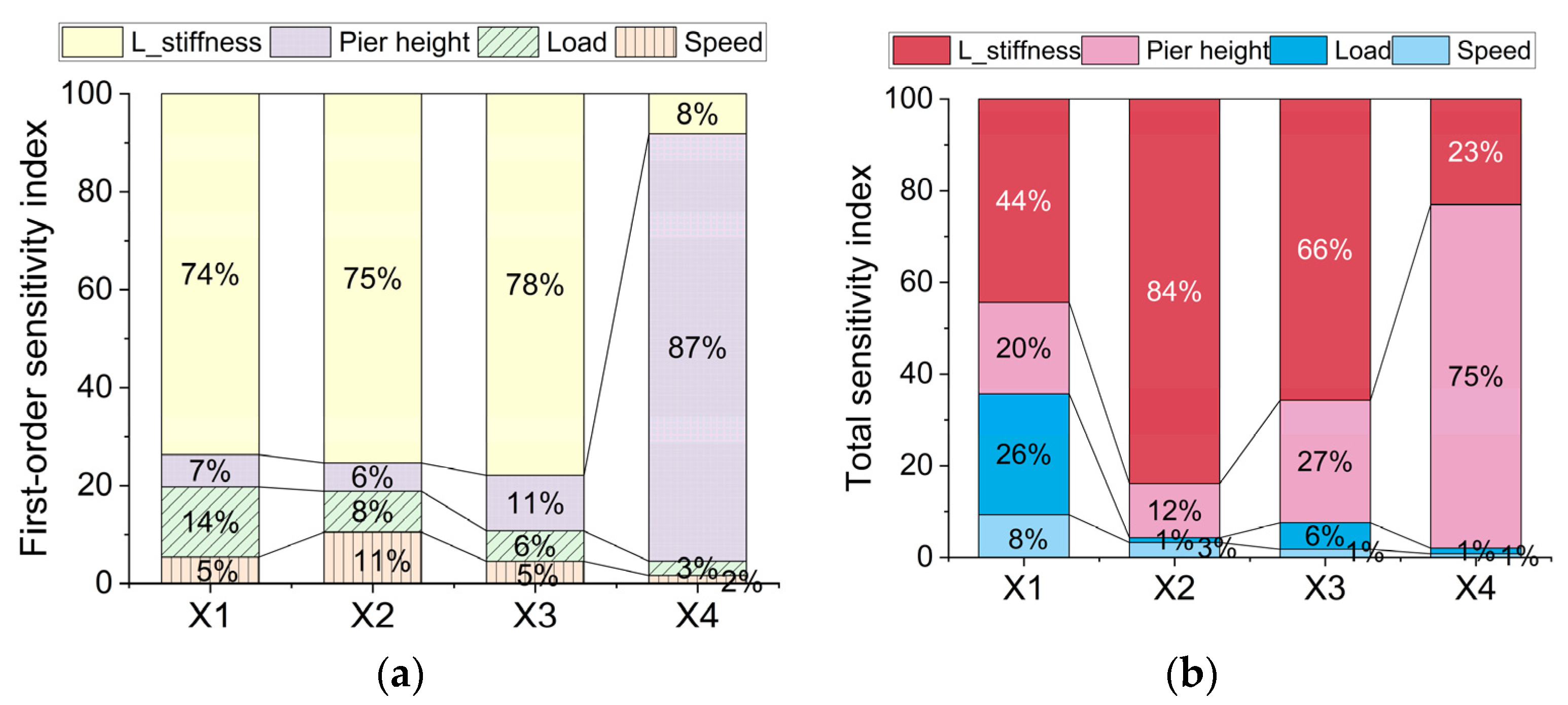

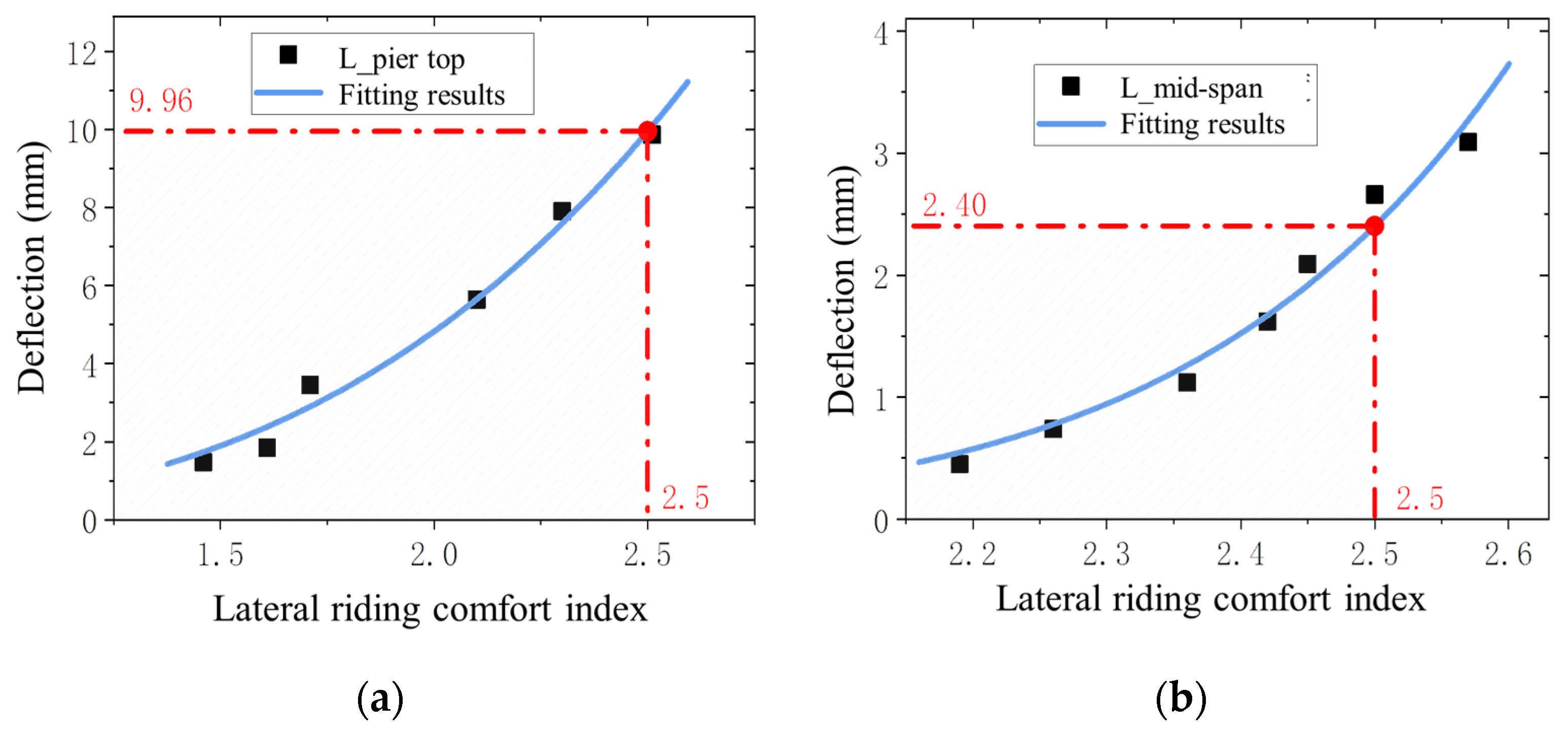
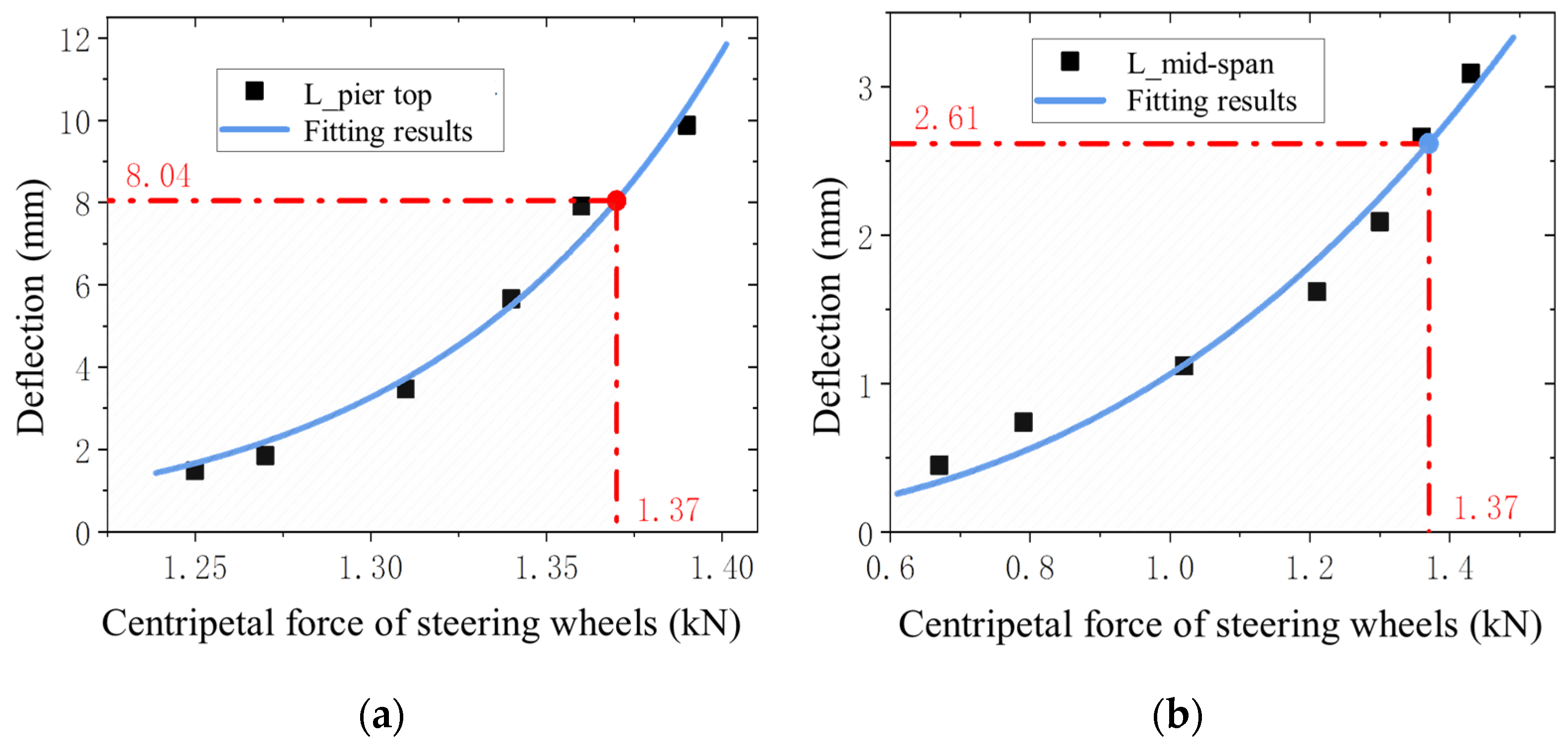
| Type | FD | FL | FM |
|---|---|---|---|
| Vehicle | 1.53 | 0.68 | −0.03 |
| Bridge | 1.12 | −0.15 | −0.04 |
| Judging Criteria | Lateral Acc. | Lateral Riding Comfort | Wheel Lateral Force Limit |
|---|---|---|---|
| Lateral deflection at the pier top (mm) | 8.56 | 9.96 | 8.04 |
| Lateral deflection–span ratio | L/3600 | L/4200 | L/3900 |
Disclaimer/Publisher’s Note: The statements, opinions and data contained in all publications are solely those of the individual author(s) and contributor(s) and not of MDPI and/or the editor(s). MDPI and/or the editor(s) disclaim responsibility for any injury to people or property resulting from any ideas, methods, instructions or products referred to in the content. |
© 2024 by the authors. Licensee MDPI, Basel, Switzerland. This article is an open access article distributed under the terms and conditions of the Creative Commons Attribution (CC BY) license (https://creativecommons.org/licenses/by/4.0/).
Share and Cite
Zhang, H.; Wang, P.; Li, Q.; Jin, J.; Wei, S.; Guo, F.; Feng, C.; Deng, Q. An Experimental and Numerical Study on the Lateral Stiffness Limits of Straddle-Type Monorail Tour-Transit Systems. Buildings 2024, 14, 3111. https://doi.org/10.3390/buildings14103111
Zhang H, Wang P, Li Q, Jin J, Wei S, Guo F, Feng C, Deng Q. An Experimental and Numerical Study on the Lateral Stiffness Limits of Straddle-Type Monorail Tour-Transit Systems. Buildings. 2024; 14(10):3111. https://doi.org/10.3390/buildings14103111
Chicago/Turabian StyleZhang, Hong, Pengjiao Wang, Qin Li, Junhui Jin, Shiqi Wei, Fengqi Guo, Cheng Feng, and Qun Deng. 2024. "An Experimental and Numerical Study on the Lateral Stiffness Limits of Straddle-Type Monorail Tour-Transit Systems" Buildings 14, no. 10: 3111. https://doi.org/10.3390/buildings14103111
APA StyleZhang, H., Wang, P., Li, Q., Jin, J., Wei, S., Guo, F., Feng, C., & Deng, Q. (2024). An Experimental and Numerical Study on the Lateral Stiffness Limits of Straddle-Type Monorail Tour-Transit Systems. Buildings, 14(10), 3111. https://doi.org/10.3390/buildings14103111







